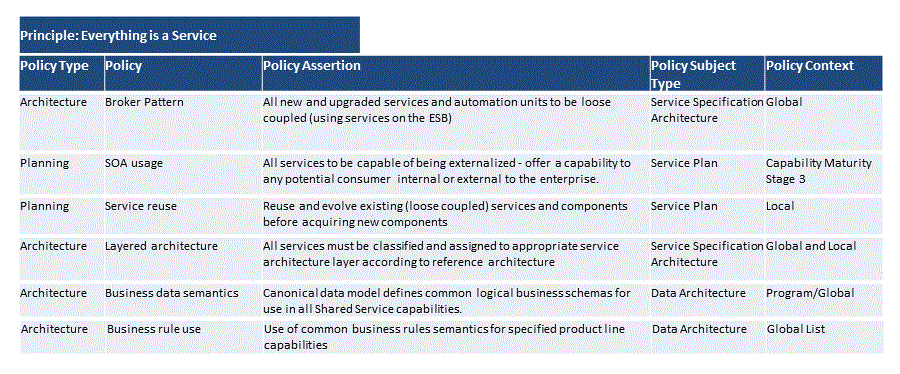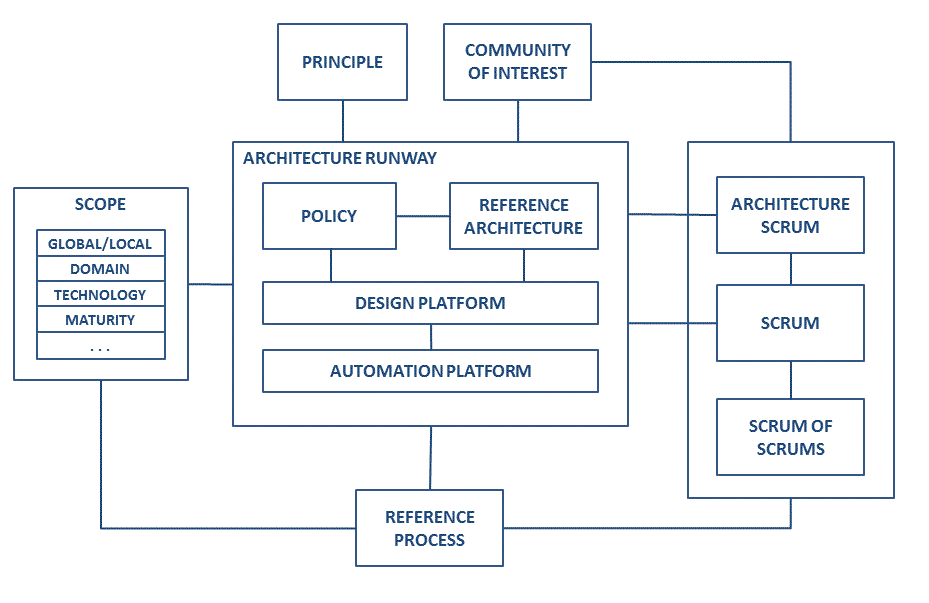“Last year the decision was finally made to mandate Agile across our enterprise. The decision was taken, even though there were many unanswered questions. The assumption was that forcing the migration, along with adoption of popular “enterprise Agile methods” would ensure resolution of the outstanding questions. In practice, Agile methods have been very effective in delivering specific digital business initiatives. But almost inevitably the distribution and delegation of architecture has resulted in duplication, inconsistency and increased complexity, across all project types including legacy and new projects. We are now concerned that we no longer have an effective governance capability. The question is how do we fix this without losing the undoubted benefits of Agile methods?“ Enterprise Architect, F2000 company.
Over the past few months I have heard this message over and over again. While Agile is being successful, it is increasingly in conflict with broader goals. And this is clearly becoming a major issue, manifest in increased complexity, horizon of change and coordination issues as well as inconsistent customer experience. I am now regularly advising a practical approach to resolution by addressing from the governance perspective.
In many organizations governance is still practiced by phase or stage gate peer review, and Agile projects are forced to accommodate, which leads to WaterScrumFall or worse. But governance criteria and policies are often very weak anyway, out of date or non-existent. Consequently governance is frequently a matter of opinion and experience, highly dependent upon the experience of individual reviewers. As we all know, a basic principle of Agile methods is delegation of responsibility, and ideally we need to delegate governance to the Agile practitioners and teams. So the question is how to implement self-governance and ensure quality and consistency of governance?
I think it was an old John Cleese training film in which Cleese himself plays the part of a manager telling a subordinate that he is now empowered, and he scatters magic dust over him and shouts some magic words saying, “You are now empowered!” Clearly this isn’t any more useful than telling an Agile team that they are now self-governing! Rather we need to go back to basics and define and communicate what governance is required and provide Agile teams with guidance on what is expected.
That sounds good in theory, except that in practice no one is going to be able to accurately define all the governance requirements; certainly not in a fast changing, Agile business and technology environment; nor will Agile development teams be able to keep up with a bureaucratic regime that continually issues edicts that everyone is expected to adopt.
What’s required is a governance system that works in an Agile environment. The parameters of the Agile governance system comprise:
a) A defined Agile governance model
b) Defined principles and reference architecture that establish ways of working together with articulation of business value
c) Automation systems that progressively incorporate the principles and reference architecture into frameworks, tooling, design time platforms, deliverable profiles and knowledge management systems.
d) A Community of Interest (CoI) responsible for the governance system and communications
e) A communication system that ensures Agile projects are fully implementing the governance system, and providing at least retrospective feedback to the CoI that contributes to a common asset base as well as practice maturity.
Agile Governance Model
This is a much simplified Agile governance model. Key points to note are:
1. the centricity of the architecture runway, and the tight relationships between policy, reference architecture, reusable assets and the automation platform.
2. variants guided by various dimensions of scope, which may include applicability, business or technology domain, or even the maturity of the business or technology domain to achieve compliance.
Principles are a great place to start. Self-governance is going to be a key part of Agile governance, and if we can’t articulate and communicate what’s important then we are dead in the water. Some examples shown here:

Reference Architecture is a critical capability, defining the architecture styles and patterns and applicability. But reference architecture shouldn’t stop at models, it must be realized in code in the Design Platform – which progressively realizes the reference architecture as application level infrastructure reusable across multiple projects. The design platform is typically managed by the CoI, a collaboration of senior developers and architects that decide what should be in the platform and develop the models and code as exemplars that succeeding projects will be happy to use, customize and or extend. The design platform is therefore a critical governance tool that actively evolves, managed by the CoI and constantly challenged by project developers to provide optimal solutions to delivering on the principles and reference architecture. As a by-product the mature design platform will also be a major productivity tool; for example in the
Everware-CBDI Agile Service Factory, over 80% of the code for typical large projects will be automatically inherited from the platform.
As shown Principles are generic patterns or techniques that guide strong solutions to business problems. The application of Principles is achieved by Policies. But not your father’s policies! In many (most?) organizations Policies are outdated lists of standards. In Agile governance, policies should be a context based record of how the principles and reference architecture have been realized. Like principles, policies are not mandates from senior management, they are transparent communications of pragmatic decisions made by the CoI on the best way of delivering an optimal result in a particular context, reusing tried and tested methods supported by existing architecture and design assets. This is therefore a continuously evolving body of knowledge, specifically tailored for one enterprise’s needs. Examples below. Note in particular the Policy Context that highlights applicability and exemption.

Many Agile teams are now using the Scrum of Scrums approach to coordination of multiple projects. This is a highly effective mechanism to manage the pan-Scrum backlog. However this coordination must not be confused with architecture realization. The Community of Interest is not a Scrum of Scrums, it is a group of the most respected architects and developers who will be active practitioners in architecture and development projects, who coordinate the realization of the architecture, the models and implementing code, typically in direct response to project demand, but involving CoI members as appropriate to review, refine and contribute to improve the solution, to be optimal, generic, principle and policy compliant. The Architecture Scrum may therefore on occasions be a series of architecture specific sprints, perhaps at commencement of new programs, or in response to significant new areas of reference architecture or design platform requirement. But in momentum situations the Architecture Scrum is more likely to be integral to multiple development Scrums.
In a generic sense, governance is concerned with ensuring the integrity of the delivered product. This requires a strong focus on the architecture and how it is realized. As many organizations are now realizing, delegation of architecture in an uncontrolled manner is high risk. The approach outlined actually encourages delegation of architecture but to a coordinating body, the CoI, which itself is charged with supporting project demands and broader organizational objectives. But the approach outlined also recognizes that there needs to be explicit documentation of architecture principles and policies and their application in order to allow communication and review, and justification of business value. This is a necessary level of documentation needed to communicate to the many stakeholders involved.
Summary
Reliance on opinions expressed on a case by case basis, or architect resource involvement in projects without the backing of strong, defined reference architecture, gives programs or projects far too much discretion. Whilst we may laugh at John Cleese’s magic dust, in practice the embedding of key architectural code into the platform layer actually does make governance considerably more effective. But even if it’s incredibly effective, it’s not magic. An effective CoI comprising the very best architect and developer skills available means all projects have access to optimal solutions as well as automatic compliance. Agile governance as described in this post is therefore not an extension of Agile methods per se, rather it is a bridge between Agile methods and agile architecture that defines and ensures desired outcomes, without compromising the integrity of the Agile process.


